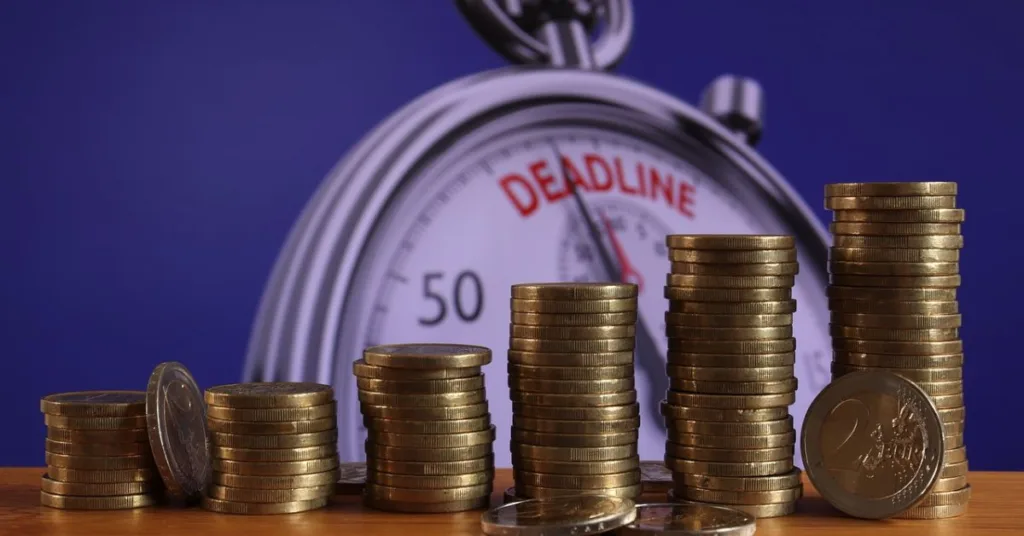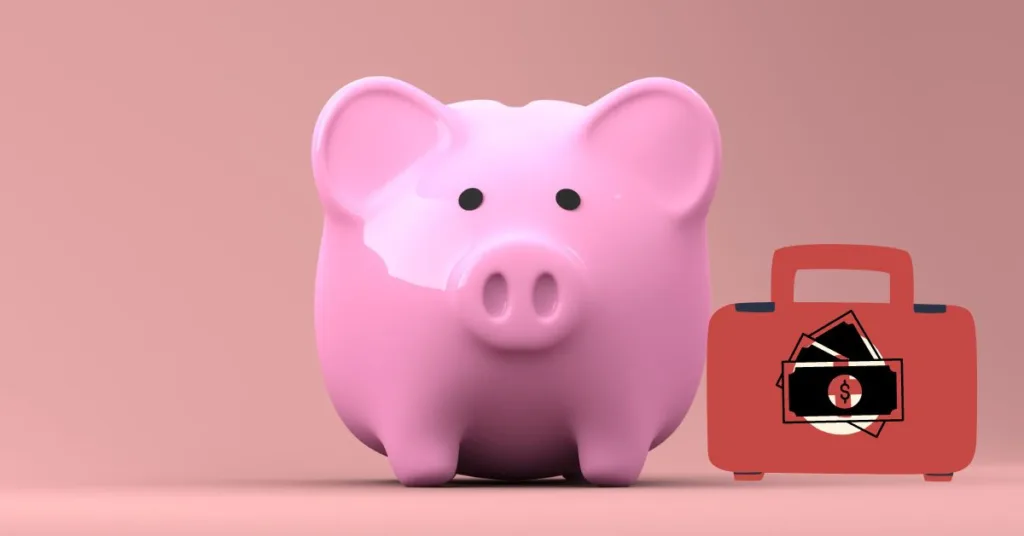This post may contain affiliate links to products or services. I may receive a commission for purchases made through these links with no cost on you. Please read my disclosure for more information.
Knowing how the debt avalanche method works can give you an idea how to strategically approach your debt repayment.
In the realm of personal finance, the burden of debt can be overwhelming, casting a shadow over one’s financial well-being and future aspirations.
Fortunately, various strategies exist to tackle debt systematically, with the debt avalanche method being one of the effective approaches used by some.
WHAT IS THE DEBT AVALANCHE METHOD
At its core, the debt avalanche method is a strategic approach to debt repayment that prioritizes tackling high-interest debt first.
Unlike the debt snowball method, which focuses on paying off debts with the smallest balances first, the debt avalanche method targets debts with the highest interest rates.
By addressing high-interest debts early on, this method minimizes the overall interest paid overtime, potentially accelerating your journey to debt free life.
The debt avalanche method operates on several key principles:
- Interest Rate Prioritization: High-interest debts are prioritized over low-interest debts to minimize interest accumulation.
- Minimum Payments: While focusing on high-interest debts, minimum payments are maintained on all other debts to avoid penalties and maintain creditworthiness.
- Systematic Approach: Repayment is approached systematically, with a clear plan to allocate available funds towards targeted debts.
- Persistence and Discipline: Success with the debt avalanche method requires persistence and discipline in adhering to the repayment plan, even when you faced with challenges or setbacks.
HOW THE DEBT AVALANCHE METHOD WORKS
Implementing the debt avalanche method requires careful planning and execution:
1. Lists All Your Current Debts
Begin by compiling a list of all your outstanding debts, including balances and interest rates.
2. Identify High-Interest Debts
Prioritize debts based on their interest rates, with the highest rates receiving primary focus.
For instance, let’s consider an individual with the following debts:
Credit Card: $10,000 balance, 18% interest rate
Auto Loan: $15,000 balance, 8% interest rate
Personal Loan: $8,000 balance, 12% interest rate
In this example, Credit Card carries the highest interest rate at 18%, followed by Personal loan at 12%, and Auto Loan C at 8%.
3. Allocate Available Funds
Determine the amount of funds available for debt repayment each month. This will be determined by your budget.
Then allocate fund towards the targeted high-interest debt while making minimum payments on other debts.
4. Monitor your Progress
Regularly monitor your progress towards debt repayment goals, adjusting the repayment plan as needed based on changes in your financial circumstances.
ADVANTAGES OF THE DEBT AVALANCHE METHOD
The debt avalanche method has its advantages:
- You can save on interests. By targeting high-interest debts first, you can significantly reduce the amount of interest paid over the repayment period.
- It is an efficient debt repayment method. The debt avalanche method prioritizes debts in a financially optimal manner, potentially leading to faster overall debt elimination.
- Provides a sense of financial empowerment. Successfully implementing the debt avalanche method stir a sense of financial control and empowerment, laying the foundation for long-term financial stability.
- It can improve your credit score. As debts are paid off strategically, borrowers may see improvements in their credit score, enhancing their financial profile.
DISADVANTAGES OF THE DEBT AVALANCHE METHOD
While the debt avalanche method offers several advantages, it’s important to consider its potential disadvantages as well:
- There is a slow progress on small debts. Because the focus is on high-interest debts regardless of their size, individuals with smaller debts might not experience the psychological boost of quickly eliminating a debt, which can affect motivation.
- It’s a long-term commitment. The debt avalanche method requires consistent discipline and patience over an extended period, which can be challenging for some individuals to maintain.
- You can potentially feel discouraged. Seeing slower progress on overall debt reduction, especially in the beginning, may lead to feelings of discouragement or frustration.
- It has a limited flexibility. Strict adherence to the debt avalanche method may limit flexibility in financial decision-making, as funds are primarily directed towards high-interest debts regardless of other considerations.
- May pay higher total interest overtime. While the method aims to minimize overall interest payments, individuals with a mix of high-interest and lower-interest debts may end up paying more in total interest compared to alternative strategies like the debt snowball method.
- It requires a strong financial discipline. Success with the debt avalanche method relies heavily on disciplined financial management and may not be suitable for those who struggle to stick to a strict repayment plan.
TIPS FOR SUCCESS
To maximize the effectiveness of the debt avalanche method, consider the following tips:
- Automate your payments. Set up automatic payments for minimum payments on all debts to avoid missed payments and late fees. For extra payments towards high-interest debts, schedule automatic transfers from your bank account to ensure consistency and adherence to your repayment plan.
- Increase your income. Explore opportunities to increase income through side hustles, freelance work, or seeking higher-paying employment to accelerate debt repayment.
Recommended reading: How to Start Selling on Etsy in 6 Simple Steps, 24 Popular Digital Products to Sell on Etsy
- Reduce your expenses. Trim unnecessary expenses and redirect those savings towards debt repayment to expedite the process.
- Seek support. Surround yourself with a supportive network of friends, family, or financial advisors who can encourage and motivate you throughout your debt repayment journey. Share your goals with them and seek advice or accountability when needed.
- Stay Consistent. Consistency is key to success with the debt avalanche method; stick to the repayment plan even during challenging times. You can stick or put an encouraging note or image in your home, or office where you can visually see it every day to remind you of your goal.
- Celebrate success. Treat yourself for a simple meal for a job well done. This will motivate you to continue in your debt-free journey.
HOW TO KNOW IF THE DEBT AVALANCHE METHOD IS RIGHT FOR YOU
Deciding whether the debt avalanche method is suitable for your financial situation involves considering several key factors.
Firstly, assess the interest rates on your debts, prioritizing those with higher rates.
Then, evaluate your ability to stay disciplined with your repayment plan.
Furthermore, consider your emotional response to debt repayment.
Some individuals find motivation in prioritizing high-interest debts as it provides a sense of financial empowerment and accomplishment.
However, others may prefer the psychological boost of paying off smaller debts first, regardless of interest rates.
It’s essential to choose a method that aligns with your financial goals, level of discipline, and comfort with the repayment approach.
If you’re uncertain about which method is best suited to your situation, consulting a financial advisor can provide personalized advice based on your specific circumstances.
Ultimately, by carefully weighing these factors, you can determine whether the debt avalanche method is the right choice for managing your debts effectively and achieving your financial objectives.
OTHER ALTERNATIVES OF DEBT AVALANCHE METHOD
Aside from the debt avalanche method, there are several other debt repayment strategies that you can consider based on your financial goals, preferences, and circumstances. Here are two alternative methods:
Debt Snowball Method
This method prioritizes paying off debts from smallest to largest balance, regardless of interest rates.
While making minimum payments on all debts, any extra funds are directed towards the smallest debt first.
Once the smallest debt is paid off, the amount paid towards it is rolled over to the next smallest debt, creating a “snowball” effect.
This method provides quick wins and psychological motivation as debts are paid off one by one, which can be beneficial for individuals who thrive on visible progress and momentum.
Debt Consolidation
Debt consolidation involves combining multiple debts into a single loan or credit account with a lower interest rate.
This can make debt repayment more manageable by simplifying your payments and potentially reducing the overall interest rate on your debt.
Common consolidation options include balance transfer credit cards, personal loans, or home equity loans.
By consolidating your debts, you may benefit from lower monthly payments, a fixed repayment schedule, and the convenience of dealing with a single creditor.
However, it’s essential to carefully review the terms and fees associated with consolidation options to ensure they align with your financial objectives and help you achieve long-term debt reduction.
Each debt repayment method has its advantages and considerations, so it’s essential to evaluate your financial situation and preferences to determine which approach best fits your needs.
Whether you prioritize quick wins and psychological motivation (like the debt snowball method), financial efficiency and interest savings (like the debt avalanche method), or simplified payments and potential interest rate reduction (like debt consolidation), choosing the right strategy can set you on the path to becoming debt-free.
CONCLUSION
The debt avalanche method offers a strategic and efficient approach to debt repayment, empowering individuals to take control of their financial future.
By prioritizing high-interest debts and systematically allocating resources towards repayment, you can minimize interest expenses and expedite the journey to debt freedom.
With careful planning, discipline, and perseverance, mastering the debt avalanche method can pave the way towards a brighter financial outlook and lasting prosperity.
ACTION PLAN
1. Evaluate if debt avalanche is right for you. Tip: Check out Debt Snowball Method
2. Implement the steps on how to do the method.
3. Celebrate your milestones.
Cheers to your debt-free journey!
Recommended reading:





